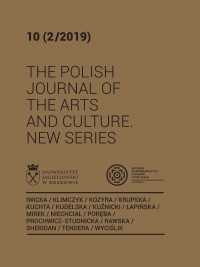Field Report: ‘Lived Religion’ in the Context of Migration: The Case of Zoroastrian Women in the USA
Field Report: ‘Lived Religion’ in the Context of Migration: The Case of Zoroastrian Women in the USA
Author(s): Paulina Maria NiechciałSubject(s): Gender Studies, Geography, Regional studies, Theology and Religion, Migration Studies, Sociology of Religion
Published by: Wydawnictwo Uniwersytetu Jagiellońskiego
Keywords: field report; religion; migration; USA; Zoroastrian Women;
Summary/Abstract: Zoroastrianism is a religion with a long history, which flourished on the basis of the beliefs and practices of ancient Iranian peoples. Perceived to be the oldest monotheistic religion in the world, for centuries it dominated the Middle East, shaping Iranian culture and way of thinking, and during the reign of the Sasanians (224–651) – the last Iranian dynasty before the Arab conquest – it was strictly associated with the state structure. After the Islamisation of the region, only a tiny group maintained the beliefs of their ancestors, either in Iran or in India, where the small community found shelter and adapted themselves to the local society – they are called the Parsis. Today the number of Zoroastrians worldwide is estimated to slightly exceed 100 000, with a strong tendency toward decline – according to their own statistics, between 2004 and 2012 the population decreased by 10%.The largest population centres are India, North America, Iran and Great Britain, and communities are also present in other countries of the Gulf Region, Pakistan as well as Australia and New Zealand (Rivetna 2013, 26).
Journal: The Polish Journal of the Arts and Culture. New Series
- Issue Year: 10/2019
- Issue No: 2
- Page Range: 211-215
- Page Count: 5
- Language: English

